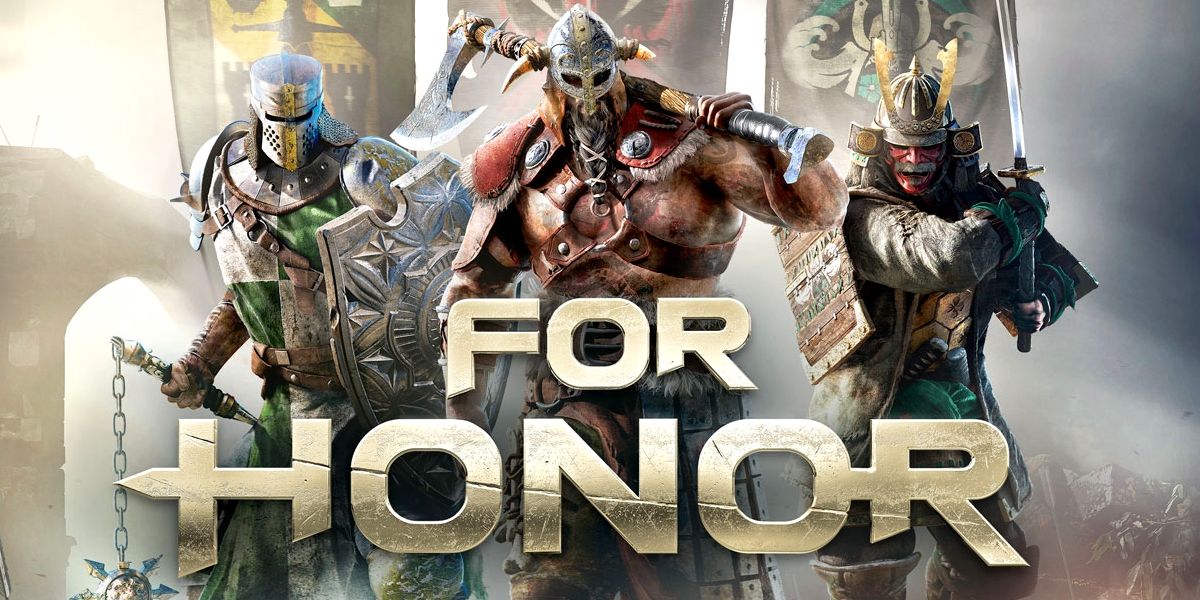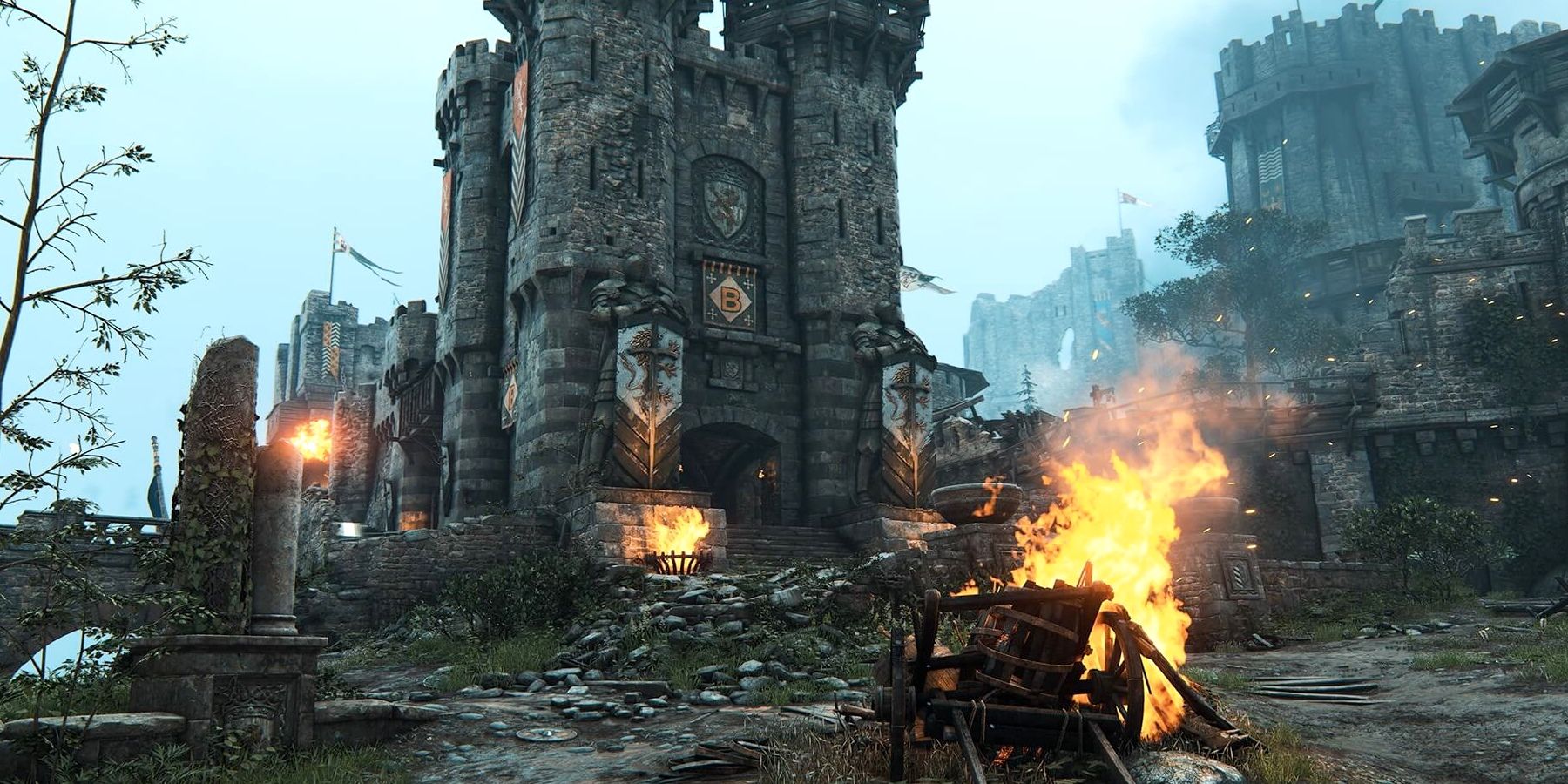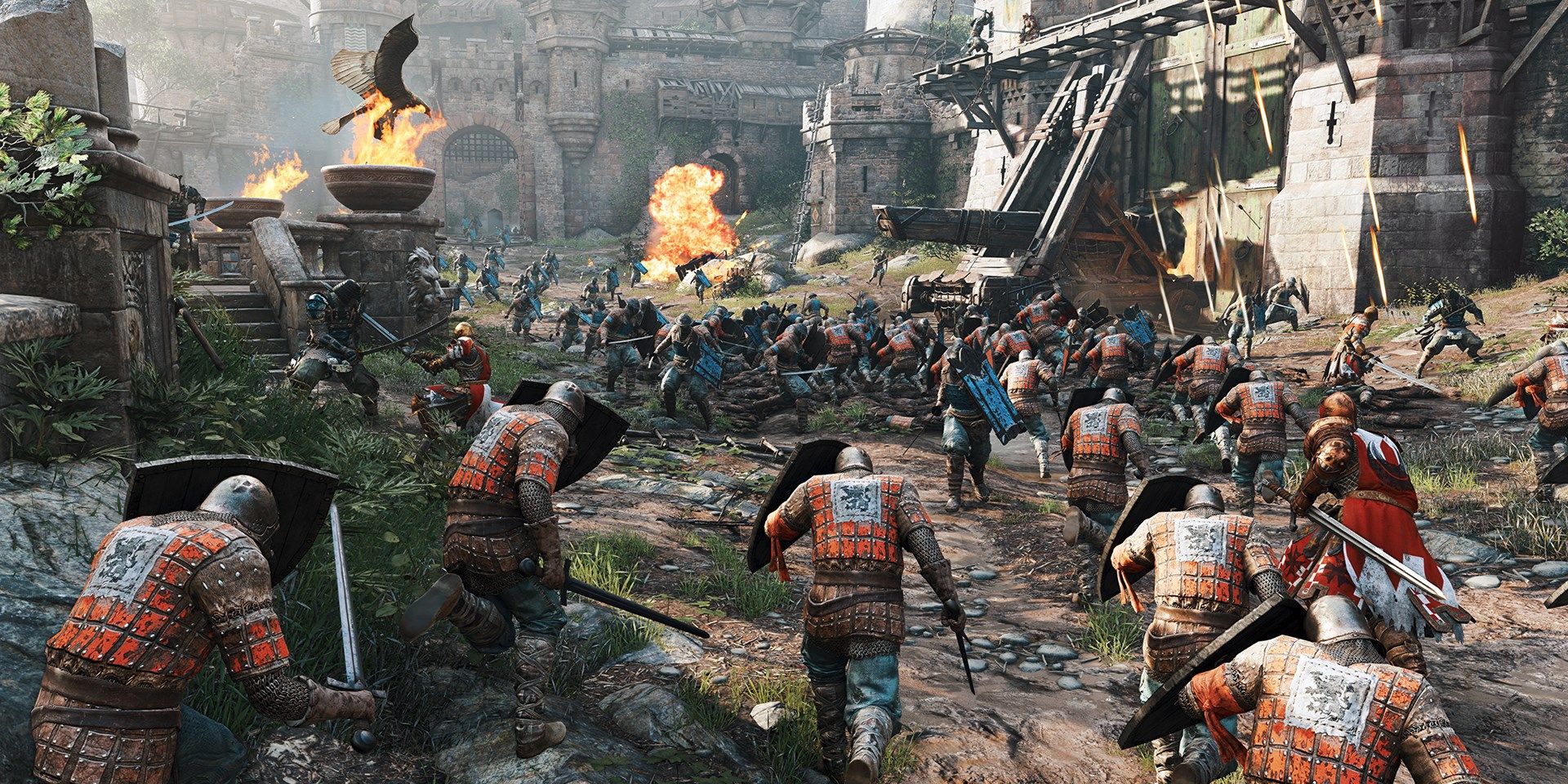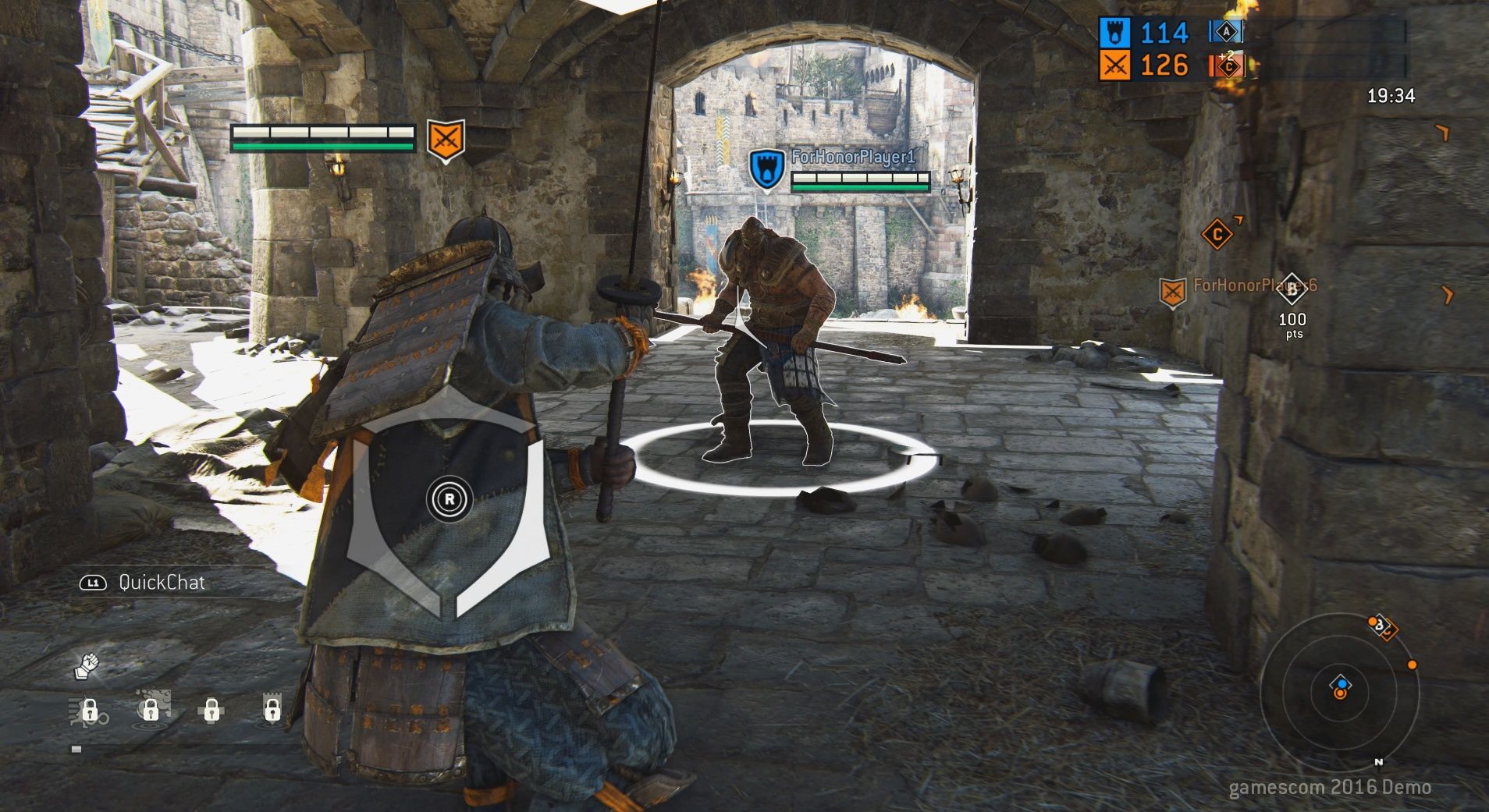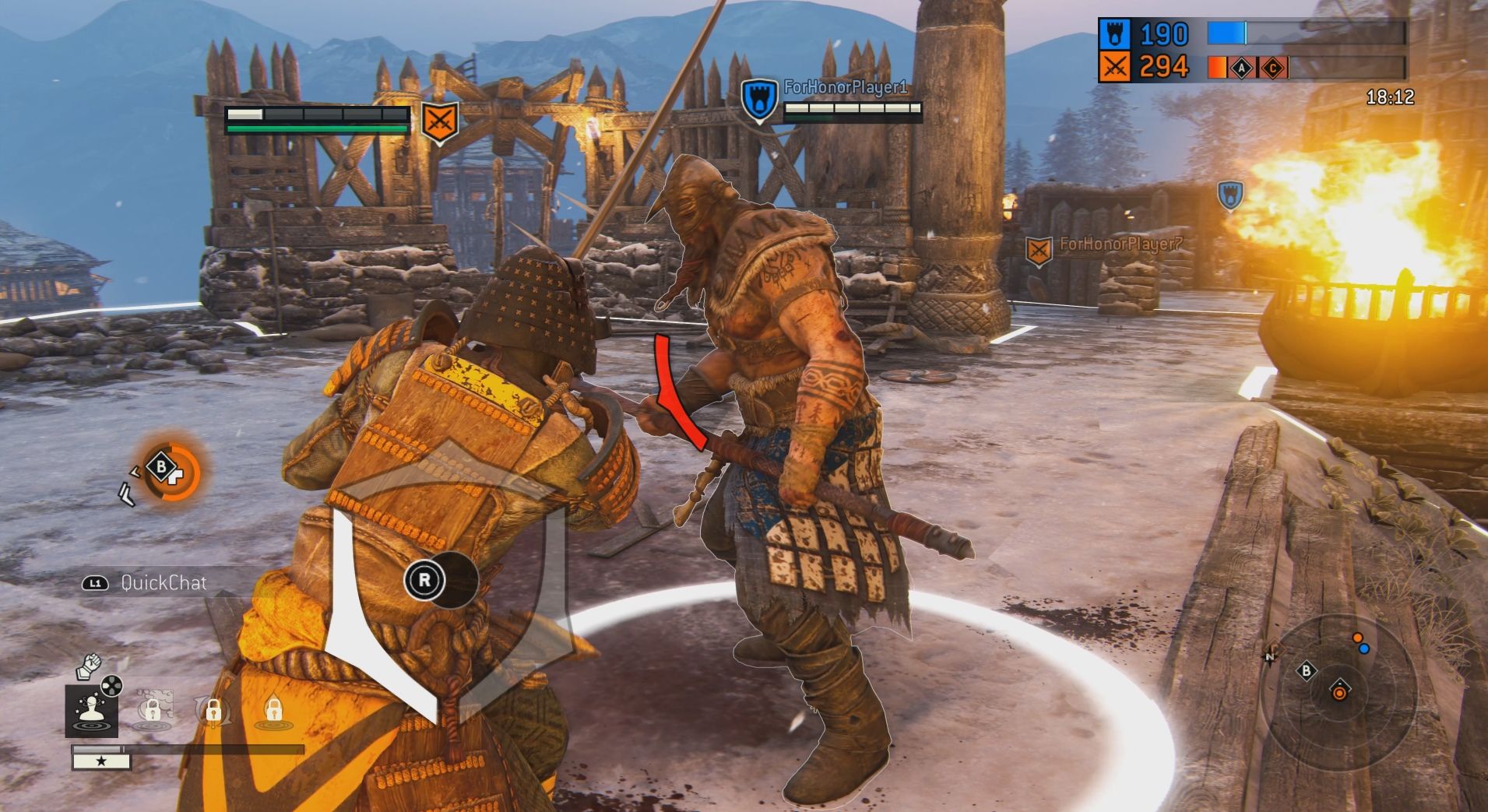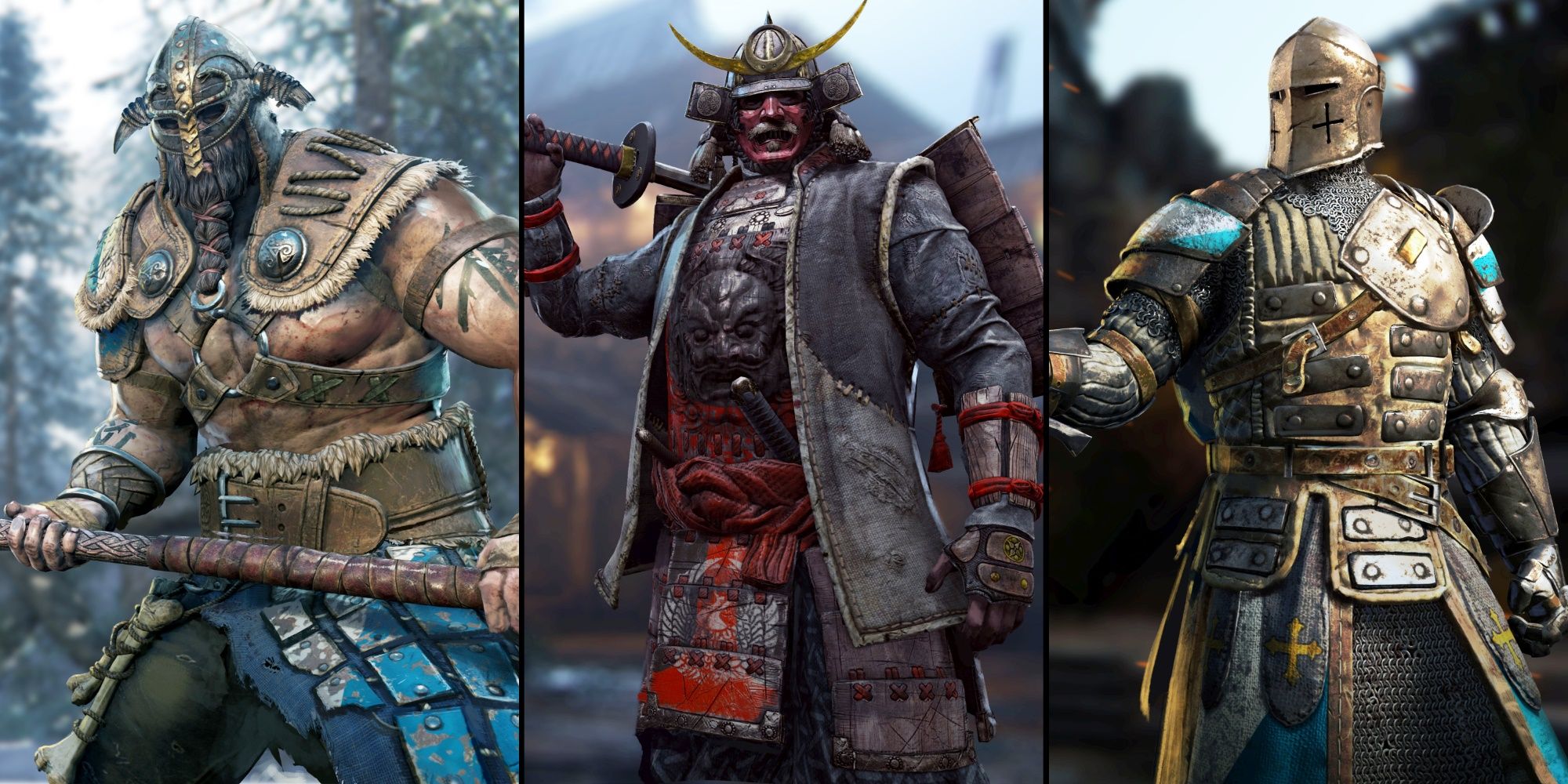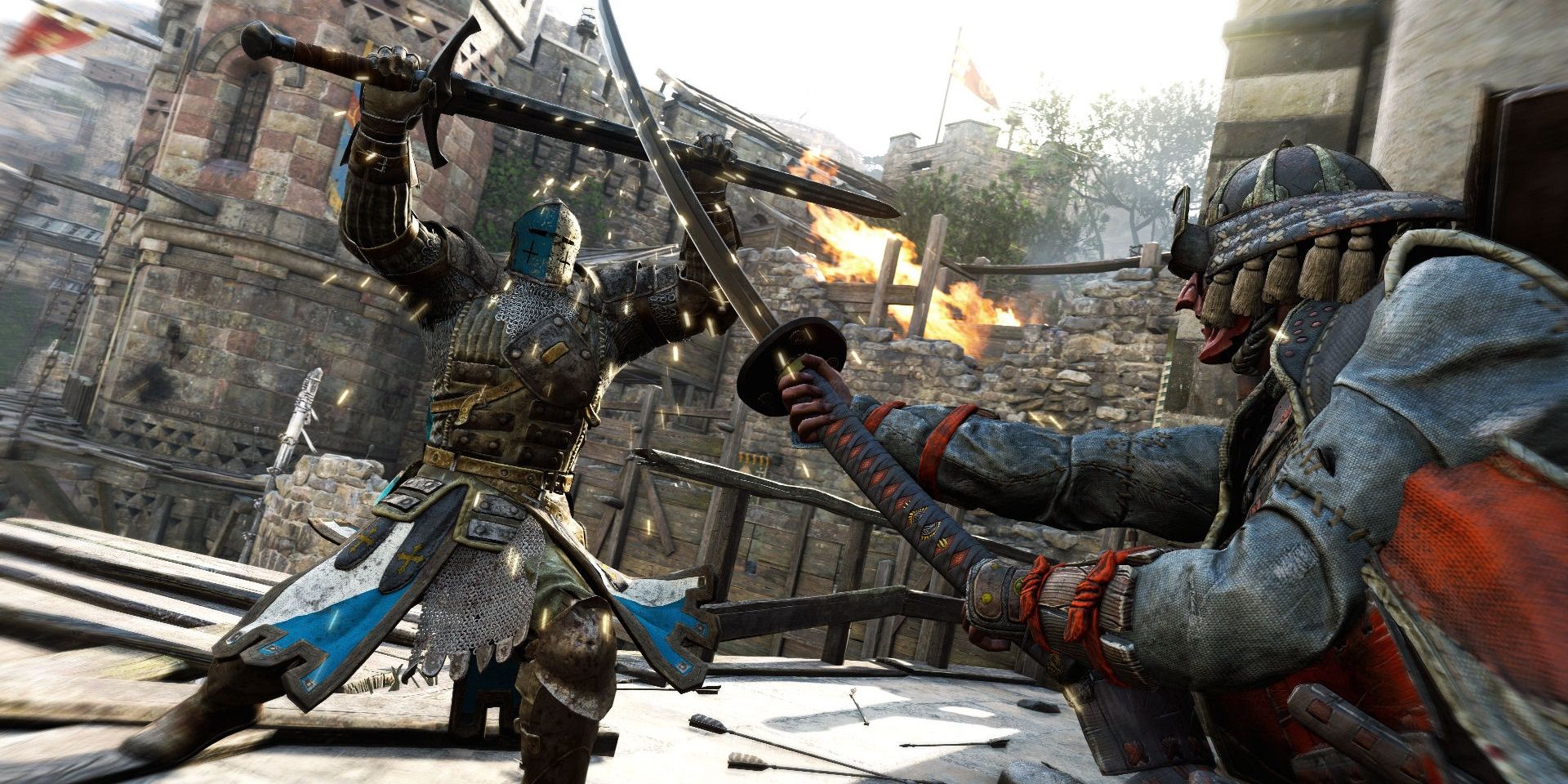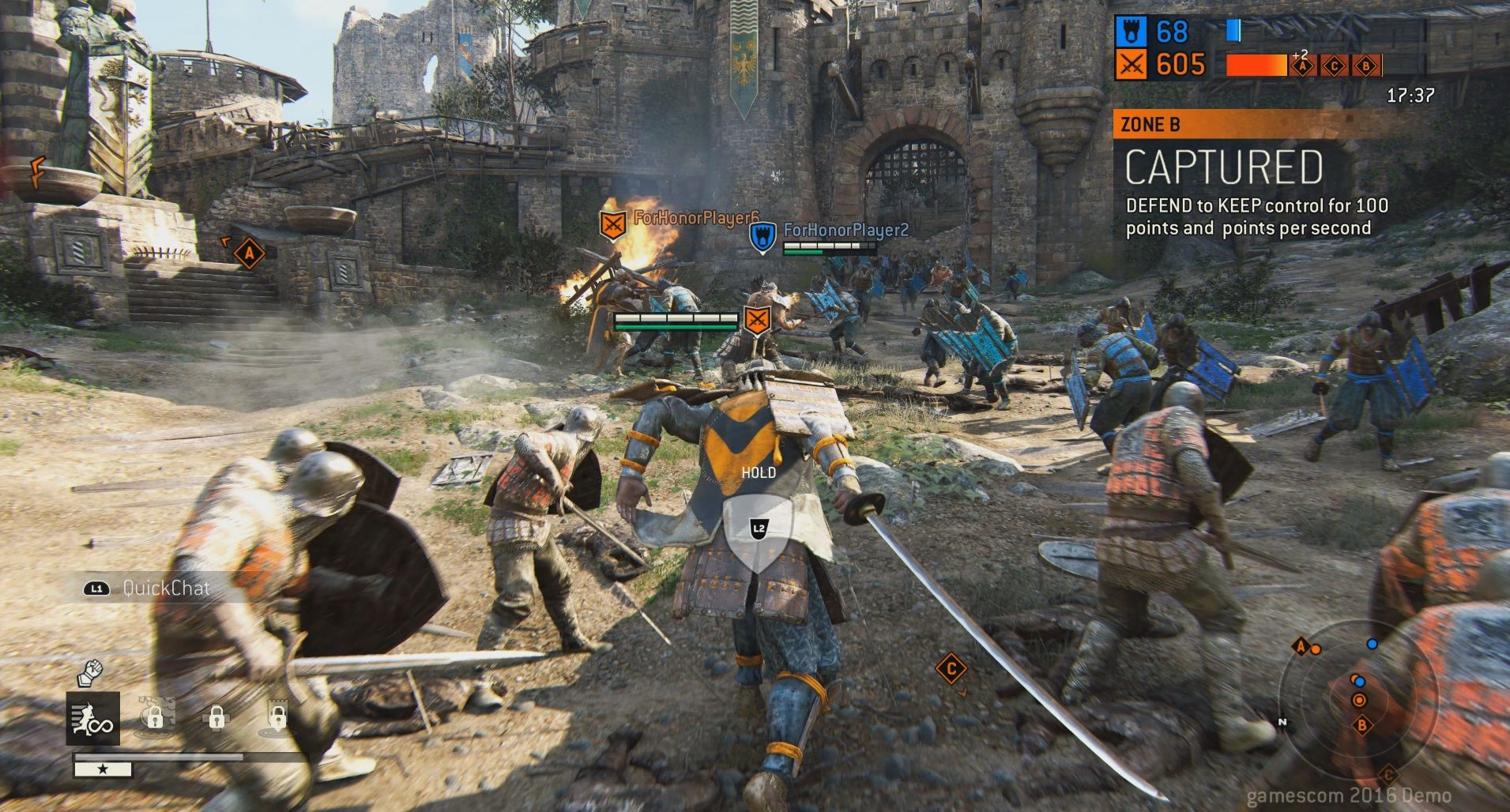When Ubisoft rolled out its slate of upcoming games during E3 2016, there was one title that stuck out for a few... obvious reasons. It's not every day that gamers get a glimpse of samurai, vikings, and medieval knights squaring off in combat, but that was exactly what For Honor was relying on for its bread and butter. But the specifics of how the game would take shape beyond a cross-historical-era slasher were elusive. Video footage showed a singleplayer campaign with some intentionally vague villain details, but the game seemed destined to be one of the eye-catching games that wind up drowned among established franchises and brands.
That may not be the case - not for ourselves, anyway. After getting the chance to try our hand at For Honor's multiplayer during a preview event prior to the game's unveiling at Gamescom, we can say that this warrior/swordplay simulator is one title that a LOT of gamers will want to keep on their radar.
The Gameplay - 4 vs. 4
The game is reported to include a full story campaign, as well as a variety of online multiplayer modes. Our time with the game focused mainly on what the developers refer to as their version of 'Team Deathmatch' - in reality, the game mode has a few more wrinkles and mechanics than simply 'search and destroy.' Playing across three different maps (each set within the environment of the three cultures at war), the 'Dominion' mode pits four players against four, with three control points spread across the arena.
The same basic structure applied across all three maps, with one control point located in the center of the map, in largely neutral territory, and two placed closer or farther from a given spawning point. The object of the game is simple: control a point uncontested, and win the value to your own total. Stay in control - and stay inside a control point - and watch the points tick up for your side, until the opposing force begins to struggle, then buckle, then collapse completely.
That's the idea, anyway.
The screenshots clearly show more than eight total fighters, and that's thanks to an added feature: AI-controlled soldiers for each side, meeting in the middle of the arena to duke it out. They're not quite the 'creeps' of a MOBA (think DotA or League of Legends), but within that central control point, they really can do damage. While the control points isolated to either side (or along the center line of the map) can prove to make or break a game, since they offer regenerating health to the team that controls it, it's the bloodbath in the contested center point that hosts the most visceral action.
It's here where fans of Dynasty Warriors or similar carnage hack-and-slashers will feel most at home, letting friendly soldiers distract the opposing players, opening them up for a kill. With a victory comes control of the point, and the enemy forces retreat - adding to the pool of points racking up for your side. But it isn't just points that determine the winner in the end, since victory is most definitely won, not tallied.
As the control points are gained, points accumulated, and enemy players defeated, the tide begins to turn: in gameplay terms, that means enemy players lose the ability to respawn, leaving each player standing forced to turn the fight - fast - or defeat is all but certain.
The Combat
That gameplay breakdown might sound a little big picture, but in our hands-on time, the moment-to-moment gameplay was filled with fast-paced combat, and managing fights, support, defense, and more than anything: combat. It's the true heart of For Honor, and the amount of time and energy the developers have put into designing a combat engine that doesn't just encapsulate three different styles, but streamlines it to a handful of button prompts is impressive in the final simplicity.
We'll keep the specifics simple (not hard): once locked onto an opponent, players have a heavy and light attack at their disposal. But to use it, a stance must first be chosen with the right stick: left, right, or top. These same stances will be required to block incoming blows from the same stances employed by your opponent. Since you'll be warned from which direction the enemy's blow is coming a split second before they swing, it's a cat and mouse game of predicting attacks, blocking on the fly, and choosing your stances, direction, and weight of attack wisely... and then doing it again, and again, until the enemy (or you) is defeated.
Add in some special attacks and items unlocked through the fight, combat rolls to evade unlocked attackers, and a shove/grab to break your enemy's guard (to either drop them or throw them), and you've got all the knowledge you need.
Using that knowledge is still going to be difficult, thanks to the simulation added by the developers. You see, it isn't enough to simply change up your attacks to keep your opponent struggling to match their thumb speed to your own - using a successful block to stun, then counterattack. Because in a head-to-head swordfight, each millisecond counts. And thanks to the developers simulating the momentum of each sword strike, the fighter who learns to flow from one strike, once stance, one type of attack to the next can dissect an opponent in a matter of seconds.
And when each kill in Dominion takes your team one step closer to total victory, each block, each guard break, and each decision - the fast enemy with lower health, or the lumbering powerhouse first? - begins to feel more and more important.
The Variety
As was obvious from the very first trailer, the core decision facing the player is a surprisingly difficult one: samurai, viking, or knight? The team has taken their time in fleshing out each option, breaking down each faction's coat of arms to show how the very symbols worn by them define their differing (and historically-informed) values. For the knights, it's order, defense, and stout combat. For the samurai, it's a flowing energy and fighting style calling on legacy. And for the vikings, it's... well, people know what to expect from vikings (big, strong, and brutal).
The differences between the factions in terms of combat are as one would expect, but things get a bit more complicated when you move into the different fighting classes in each faction. Well, not classes - the developers were keen on avoiding that term, emphasizing that each member of each faction had their own strengths and weaknesses. But in the hands of the right player, the usual rules for classes may not apply. We were only given access to the Vanguard warriors - all-around fighters with balanced offense and defense, for the most part - but even within their ranks, different weapons, speeds, and items distinguished each from the other. The combat engine remained the same, but it didn't take long to start tailoring gameplay to the fighter selected.
To make things even more interesting, the developers had unlocked the Orochi - the samurai faction's Assassin fighter. With lower defensive attributes, players could enjoy the faster strike speed and counterattack efficiency - but only accepting that, unlike the Vanguards, the Assassin had no default sword stance. For players who kept their stance flowing, preferring to match the incoming attack before launching one of their own, the Orochi may seem like a the instinctive or preferred choice. But for fighters feeling rooted in a defense-first style, the Vanguard would remain the logical choice.
It's a subtle balancing act, and one that may vary in success across the different fighters and factions. But in our limited time with the game, the actual feel and controls of combat did support the differences put in place on a technical level. And when you're able to recognize that while two massive vikings are trying to cleave your head open, that's saying something.
The Hook
So, what is it that kept us hooked from the beginning of our play session to the end? Was it the visceral impacts of both bloody sword strikes and brilliant blocks? The thrill of working in tandem as a team, ambushing enemy soldiers left behind by their teammates, or making a calculated risk of abandoning the central melee to fight another day? Or was it the satisfaction of seeing your enemies break, buckle, and be descended upon by our four-strong team?
In honesty, it was all those, and more. A combat engine that actually made the line between the player's controller and an on-screen warrior's weapon begin to blur is a compelling feat in itself - and one the development team earned the hard way. But the small details, from the incredible character models, animation acceleration and fluidity, and the personality placed into each character's footstep amount to more than the sum of its parts. And even when defeat came, bested by an opponent, we never dwelled - accepting that, in that encounter, the opponent's patience or wit had given them the edge.
Just a few seconds later, we were running back into the fray at full speed, looking for revenge, but more than anything, just looking to keep the fight going a little bit longer.
For Honor releases on February 14, 2017 for PC, PS4 and Xbox One.

